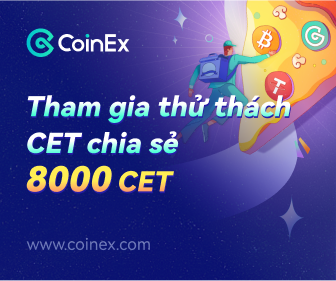
Africa, the world’s second largest continent, with a population of over 1.6 billion, is still developing when it comes to technology adoption. In most cases, people in western countries get more acquainted with technological advancements faster than those in Africa.
However, cryptocurrency is not a stranger in Africa. Ever since Bitcoin gained limelight attention, many of the younger African generations have turned to cryptocurrency as an alternate revenue source. Even though many still struggle to understand the technology it runs on, the fact that it provides an avenue where they could quickly flip for profit made it widely popular.
It is on this same trend that NFTs gained widespread adoption, especially in Nigeria, Kenya, Ghana, and South Africa. Despite this, NFT adoption in Africa is still riddled with many issues which affect the rate of adoption and ease of use within the continent.
The Rise of NFTs in Africa
The rise of NFTs in Africa can be linked to the rapid rate at which Africans adopted cryptocurrencies. In a 2021 report, Chainanalysis estimated that cryptocurrency adoption in Africa grew 1200% between July 2020 and June 2021, making it the fastest adoption rate globally.
Coincidentally, this was at the same period when NFTs were gaining mainstream attention. In December, digital artist Mike Winkelmann had made record-breaking NFT sales, the buzz of which successfully drew more attention to crypto arts. The fact that a person could make as much as $69 million on the sale of digital art caught attention worldwide, especially in Africa.
However, Africans didn’t immediately turn their attention to digital art as it was in other continents. This was because many still didn’t understand the underlying technology behind NFTs or how they could benefit from it. Thus, when cryptocurrency activities carried on massively, NFTs still dragged behind. The continent, however, caught up after prominent NFT collections such as the Bored Ape Yacht Club (BAYC) and recorded spiked prices within short periods.
For a youthful population without enough employment opportunities or money-making means, the popularity of NFTs grew quickly, but many who dived into the space did so for speculative reasons. They traded on the belief that they could realize more money in the next month or within a short period than they bought the NFT.
Today, Africans are diving deeper into NFTs and doing so for reasons different from just flipping for profit. As blockchain technology permeated more into Africa, it became apparent to many that you don’t have to be tech savvy before you could benefit from the decentralized economy.
Likewise, people realized minting NFTs wasn’t as complicated as they had thought. Thus, when a recent survey by Finder ranked Nigeria as the 6th and South Africa as the 12th largest adopter of NFTs worldwide, it wasn’t difficult to see why the countries placed that high.
In April 2022, a group of Ghanian pallbearers that went viral in 2020 as a meme on the internet cashed in on their fame. The group’s leader, Benjamin Aidoo, sold the viral coffin dance as an NFT for 372 ETH ($1.046 million then). The NFT sale to date is still the most expensive out of Africa.
Days before, in neighboring Nigeria, on April 1, Adisa Olashile, a phone photographer who mints and sells his works as NFTs, posted pictures of an old drummer he took on Twitter. He said he planned to mint and sell the pictures as NFTs and give the aged drummer 50% of the money.
Soon after, the photographer revealed that he had sold the pictures on OpenSea, each going for 0.3 ETH, amounting to over a million naira. He followed this up with shared videos of him gifting the man 50% of the money, which the old drummer took with surprise and awe. Expectedly, the kind gesture generated a lot of buzz on social media.
While many appreciated the photographer for his selflessness, several others wanted to know how they could jump on the NFT train. Since then, NFT conversations have jumped astronomically on Nigerian social media spaces as many seek to profit from the space.
African Digital Artists
Since the rise of NFTs, a wave of digital artists has risen across the continent, many of whom hope to offer their arts for sale to the rest of the world. While digital artists have existed for a long time in Africa, using NFTs as a medium is still a relatively new and growing area.
For the most part, only artists who are technologically inclined and understand how to mint their works have been able to take advantage. As a result, only a few artists are diving into crypto arts to get value for their works, while the rest still depend on traditional art galleries to make sales.
In 2021, one of the foremost digital artists in Africa, Osinachi Igwe, garnered media attention after he sold NFTs worth $75,000 in just ten days. Before achieving this feat, the Nigerian visual and digital artist has, as far back as 2017, been minting his works into NFTs after traditional galleries refused to take his work due to their nature. Rather than conventional artistry, Osinachi uses Microsoft Word to design his art.
Osinachi’s success story adds to a growing list of African artists who have found success in NFTs. Across Africa now, there are several digital artist communities for African digital artists. Citable examples include the African NFT community, Black NFT Art, Network of African NFT Artists, Afro Future DAO, Kenyan NFT Club, and Nigeria NFT Community. These communities help raise awareness about digital arts, promote collaborations, share resources, and host events.
Despite the revolutionary nature of NFTs and how it makes the world a borderless one, African digital artists still face certain issues. One, there is still a market problem. While several digital artists are in the space, there are not enough African NFT collectors. To a considerable extent, it is non-existent. This is worsened by the fact that African NFT artists get low patronage compared to artists from elsewhere. Thus, African artists are left with the sole choice of offering their arts with the hopes of an international collector buying their creations.
Coupled with the market problem is an economic challenge too. Often, exorbitant gas fees are required for minting on most NFT marketplaces. This is a challenge considering the widespread financial problems in most African countries and the vast disparity between local currencies and the dollar. Thus, this discourages a lot of budding artists from taking an interest in NFTs.
Regulations in the Space
Like in several other countries, African countries haven’t turned kindly to cryptocurrency use within their jurisdiction. Those who haven’t restricted trading activities have cautioned their citizens against investing in crypto. So far, crypto trading is banned in Algeria, Egypt, Morocco, and Tunisia, while countries like Nigeria, Cameroon, and Gabon have some forms of prohibition regarding crypto trading.
Since NFTs are traded using native currencies of the blockchain they are hosted on, the restrictions have made it difficult for NFT enthusiasts in countries where there are restrictions or prohibitions to carry out trading with ease. In Nigeria, for instance, financial institutions are restricted from carrying out crypto-related transactions and are mandated to close accounts operated on that basis. This effectively drove users to use Peer-2-Peer platforms to carry out their trading activities.
The Future of NFTs in Africa
Despite the governments’ restrictions that have affected NFT use and trade in Africa, NFTs continue to blossom in the continent. Asides from offering African artists a platform where they could offer their arts for sale, it has also served as a means of livelihood for thousands on the continent.
But NFTs could do more for the continent other than just create opportunities for the continent. In a part of the world where ownership of properties is still validated through manual means, the use of NFTs could go a long way in ensuring transparency and authenticating ownership. By its very nature, NFTs are unique and traceable. Thus, not only will ownership status be preserved, but a curious person hoping to find a property owner will quickly locate the person.
Likewise, the projects coming out of Africa show NFT adoption will gain more traction in years to come. Projects such as NFTfi, Ubuntuland, and AJE: The Afriverse are pacesetters when it comes to NFT use in Africa. As time progresses, more projects will surface with the prospect of revolutionizing Africa and its people.
Source NFT Plazas



